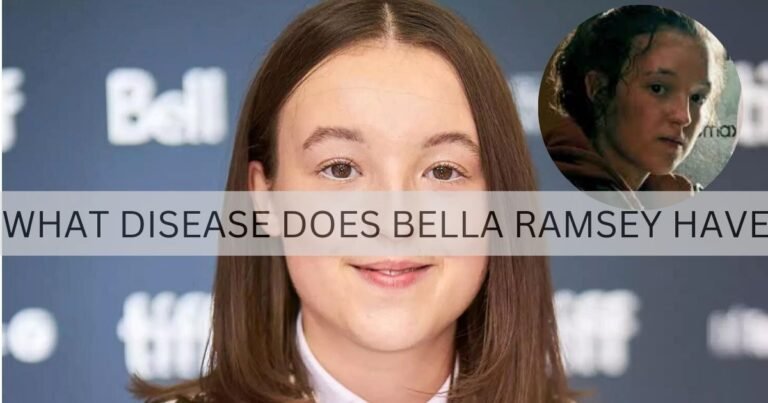What Families Should Know About Mesa Residential Treatment Programs
When your teen is hurting, the search for help can feel urgent and overwhelming. If you’re considering Mesa residential treatment—sometimes called a “RTC” or “behavioral health residential facility”—this guide walks you through what it is, who it’s for, how programs work in Arizona, and the questions that help you choose a safe, effective fit.
What “residential treatment” means (and what it doesn’t)
Residential treatment provides 24/7 care in a structured, home-like setting with on-site clinical services—therapy, psychiatry, nursing support, and skills practice. Teens live at the program temporarily to stabilize symptoms and learn tools they can bring home. The American Academy of Child & Adolescent Psychiatry explains that residential care is designed for youth with significant emotional or behavioral problems who need more support than outpatient or intensive outpatient care can offer.
Federal and state health agencies describe residential treatment as clinical services delivered in a 24-hour living environment (distinct from brief inpatient hospitalization) that can include mental health and, when relevant, substance use care.
When a Mesa residential program may be appropriate
Residential care can be appropriate when one or more of the following are true:
- Symptoms (depression, anxiety, self-harm urges, trauma responses, severe school refusal, disordered eating, or substance use) disrupt safety or daily life despite consistent outpatient treatment.
- Your teen needs daily therapy and coaching to practice skills between sessions.
- Home or school stressors are so intense that progress stalls without a reset.
A child and adolescent psychiatrist or qualified mental health professional should help determine level of care; if you’re unsure, start with an evaluation and ask explicitly about alternatives (intensive outpatient, partial hospitalization) and step-down plans after residential care. AACAP’s family guidance outlines these decision points and encourages programs to include families from the start.
What treatment typically includes
Quality teen residential programs usually offer:
- Individual, group, and family therapy grounded in evidence-based approaches like CBT (cognitive behavioral therapy), DBT skills, exposure-based therapies for anxiety/OCD, and trauma-informed care. NIMH notes these therapies reduce symptoms for many mental health conditions in youth.
- Psychiatric care for assessment and, when appropriate, medication management.
- Skills practice woven into the day—emotion regulation, distress tolerance, communication, and healthy routines.
- Education support (on-site schooling or coordination with your teen’s school) so academics stay on track.
- Recreation and wellness (sleep, movement, nutrition) to rebuild healthy rhythms.
Emerging research continues to support CBT and related modalities for adolescent anxiety and mood disorders; recent NIMH work even documents brain changes associated with CBT in children with anxiety, aligning with clinical improvements.
Why family involvement matters
Your participation isn’t a “nice to have”—it’s part of treatment. Studies link active parent/caregiver engagement (regular family sessions, coaching, and structured home visits when clinically appropriate) with more durable improvements after discharge.
Ask any Mesa residential program exactly how they include families each week, what you’ll practice at home between visits or calls, and how they’ll prepare you for reunification and aftercare.
Safety, licensing, and accreditation in Arizona
In Arizona, residential behavioral health programs must be licensed by the Arizona Department of Health Services (ADHS) to operate. Licensing checklists detail expectations such as staff qualifications, clinical documentation (assessments, treatment and discharge plans), and environmental safety. You can ask a program for its current license and review category (e.g., behavioral health residential facility).
If your family uses AHCCCS (Arizona’s Medicaid program), note that Behavioral Health Residential Facilities (BHRF) serving members must be licensed by ADHS and meet documented responsibilities for care and oversight.
Many families also look for independent accreditation (e.g., The Joint Commission) as an added quality signal, since accredited programs attest to meeting rigorous behavioral health standards and undergo regular survey reviews. Accreditation is voluntary but can indicate a commitment to safety and continuous improvement.
Daily life: what your teen (and you) can expect
Programs vary, but a typical week might include:
- Structured days mixing school, therapy groups, individual sessions, wellness, and homework/quiet hours.
- Consistent routines around sleep, meals, movement, and tech use.
- Regular family sessions (virtual or in person) plus caregiver workshops or support groups.
- Coordination with schools for credit transfer or individualized education plans.
During admissions, request a sample weekly schedule, school plan, and rules around technology, visits, and passes.
How long teens stay
There is no one “right” length of stay; it depends on goals, diagnosis, safety, and progress. Some research in adolescent residential substance use treatment suggests 60–90 days may be a helpful window for certain outcomes, but lengths vary widely by need and program model. What matters most is a measurable treatment plan, clear discharge criteria, and a written aftercare path (e.g., step-down to PHP/IOP and outpatient therapy).
If you hear only a fixed number (e.g., “everyone stays 30 days”), ask how progress is tracked and how clinicians will decide if your teen is ready for step-down.
Questions to ask Mesa residential programs
Bring this checklist to calls and tours:
- Licensing & accreditation
- Are you licensed by ADHS as a behavioral health residential facility? What is your license number and category? (Ask for proof.)
- Are you accredited (e.g., The Joint Commission)? If yes, when was your last survey?
- Are you licensed by ADHS as a behavioral health residential facility? What is your license number and category? (Ask for proof.)
- Clinical model
- Which evidence-based therapies do you use for my teen’s diagnoses (CBT, DBT skills, exposure/ERP, family therapy)? What does a typical treatment week look like?
- How are medication decisions made and reviewed?
- Which evidence-based therapies do you use for my teen’s diagnoses (CBT, DBT skills, exposure/ERP, family therapy)? What does a typical treatment week look like?
- Family involvement
- How often are family sessions? What skills will we learn? How do you handle home passes and caregiver coaching? (Family engagement improves outcomes.)
- How often are family sessions? What skills will we learn? How do you handle home passes and caregiver coaching? (Family engagement improves outcomes.)
- Safety
- How do you assess and manage suicide risk or self-harm urges? (Ask about supervision levels, room checks, and de-escalation training.)
- What’s your process for incident reporting to families and state authorities?
- How do you assess and manage suicide risk or self-harm urges? (Ask about supervision levels, room checks, and de-escalation training.)
- School & daily life
- How is education handled—on-site teachers, online school, or coordination with our district?
- What are policies for technology, visitation, and activities?
- How is education handled—on-site teachers, online school, or coordination with our district?
- Length of stay & outcomes
- What goals and measures determine readiness for discharge?
- What aftercare do you arrange in Mesa or our home community (PHP/IOP, outpatient, psychiatry)?
- What goals and measures determine readiness for discharge?
- Cost & coverage
- Do you accept AHCCCS or our private insurance? Are there additional family fees (evaluations, testing, transportation)?
- Do you accept AHCCCS or our private insurance? Are there additional family fees (evaluations, testing, transportation)?
Coordinating care before, during, and after
- Before admission: Share prior evaluations, IEP/504 plans, and medication history. Ask for a safety plan covering the time before admission if you’re waiting for a bed.
- During treatment: Join every family session you can. Practice the same skills at home that your teen is learning in program.
- After discharge: Schedule step-down services before your teen comes home. Research shows that continuity and caregiver involvement help protect gains made in residential care.
How “Mesa residential treatment” fits into the bigger picture
For many families in or near Mesa, residential care is one part of a continuum that includes outpatient therapy, intensive outpatient (IOP), partial hospitalization (PHP), residential, and inpatient hospitalization for acute crises. SAMHSA summarizes these treatment types and how they work together, which can clarify the options your team may recommend over time.
When you’re comparing Mesa residential treatment options, focus on fit (clinical match and family partnership), safety (licensing, supervision, risk protocols), and follow-through (aftercare). The right program will treat you as part of the team, explain decisions clearly, and help you see progress—not just promises.
Quick resource list
- Arizona licensing lookup & standards: Ask programs for their ADHS residential facility license and review expectations (staffing, safety, documentation). Arizona Department of Health Services
- AHCCCS & BHRF responsibilities: Helpful for families using Medicaid coverage. AHCCCS
- AACAP “Facts for Families”: Short, practical guides on youth mental health and levels of care. aacap.org
- Evidence-based therapies overview (NIMH): What CBT/DBT and other therapies involve. nimh.nih.gov
If your family is in crisis
If you’re worried your teen might act on thoughts of self-harm, call 911 or go to the nearest emergency room. You can also contact the 988 Suicide & Crisis Lifeline (call or text 988, or use chat) for immediate support. Services are available 24/7.
Final thoughts
Choosing a residential program is a big decision—and you don’t have to do it perfectly. Start with a thorough evaluation, ask direct questions, and expect collaborative, evidence-based care that includes your family at every step. With the right team and a strong aftercare plan, many teens stabilize, rebuild skills, and return home with renewed confidence.
Medical information on this page is for education, not a diagnosis or care plan. Always consult your teen’s licensed clinician for recommendations tailored to your family.






